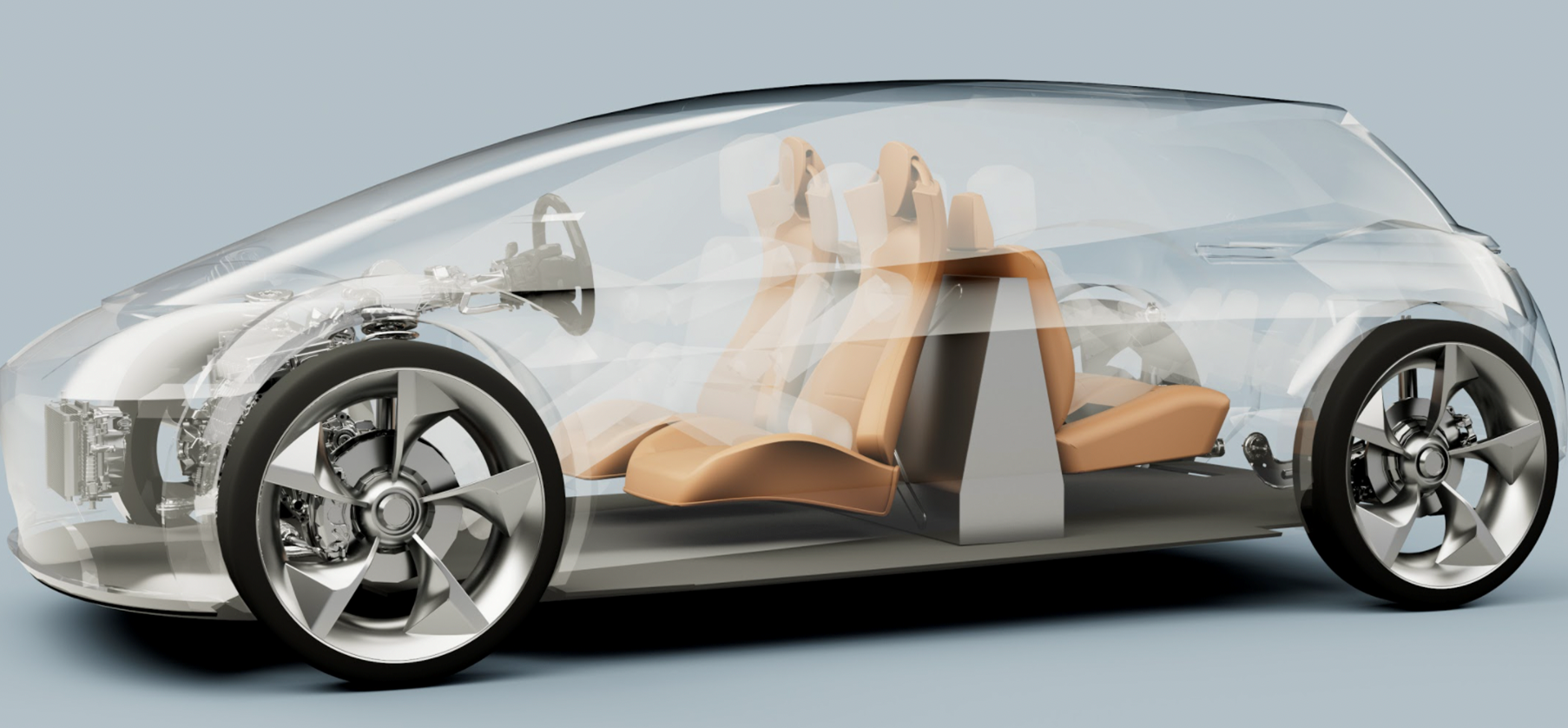Automotive innovation start-up Page-Roberts has revealed a patented design concept for an electric vehicle capable of travelling up to 30% further than current EVs on the market.

Image Credit: Page-Roberts
Until now, EV manufacturers have placed car batteries under the floor as a convenient way to package sufficient battery energy for an acceptable range. The drawbacks of this arrangement are the added height, increased weight and body structural complexities, along with an often-extended wheelbase.
The Page-Roberts innovation positions the battery between the front row seats and a second row of rear-facing seats. This arrangement is far more compact than standard electric vehicle designs on the market and offers the potential for a lower, more aerodynamic vehicle with a standard wheelbase. The resulting vehicle would be lighter and more streamlined, offering the potential either for an extended range of up to 30%, or to use a much smaller battery to achieve a similar range. Manufacturing costs, meanwhile, could be cut by up to 36% as a result of the unique arrangement.
Page-Roberts CEO, Freddy Page-Roberts said: “the skateboard arrangement has become the mainstay of most EVs. But this results in taller vehicles with increased aerodynamic losses and energy consumption (especially at motorway speeds), extra structure required to protect against impact, and a longer wheelbase to account for the battery. The increased size and weight dramatically inhibit range. By simply moving the location of the battery pack, we have come up with a much more efficient solution.”
Commenting on the design’s flexibility, he continued: “rear-facing seats are widely used in taxis and camper vans and may even become the norm for automated vehicles. Aside from the obvious benefits of increased design flexibility, they provide excellent outward visibility – a key factor for boosting occupant comfort. Their position ahead of the rear wheels also provides enhanced passenger protection – reduced whiplash, for example, in the case of frontal impact.”
The Page-Roberts design is particularly suited to small EVs, for which there is a very strong demand, despite most manufacturers focusing their attention on larger SUVs. The absence of batteries under the floor offers great design freedom, with the potential to produce lower height designs, giving a unique solution for sleek and sporty 4 seat vehicles.
“The average car journey in the UK includes just two people – so why do we continue building massive cars?” Page-Roberts added. “Most people don’t want overly large cars. Small EVs are ideal for urban environments. In our design, the rear-facing seats, whilst perfect for two additional passengers, also have the benefit of providing extra luggage space when not in use, which is ideal considering it’s often just one or two people travelling.”
Mark Simon, CTO, said: “challenges around battery cost and energy density along with range and charging infrastructure continue to stall progress with EVs, despite both car brands and tech leaders racing to put their stamp on the market. Our design concept reduces costs, increases efficiency, enhances agility, and offers design freedom. The efficiency translates to less time charging from either longer range or smaller batteries, so pressure on charging points – another key pain point for the industry – will also be reduced.”
“The significant efficiency gains can also be translated into electric vehicles that have a far smaller carbon footprint. Rightfully, the environmental impact of producing and recycling batteries is a growing consideration for policy makers and manufacturers – the ability to design vehicles with smaller batteries reduces the impact at the start of a vehicle’s life and makes recycling the batteries easier.”
Launched in 2019, Page-Roberts combines the expertise of automotive pioneer Freddy Page-Roberts, and ex- Ricardo Project Director, Mark Simon. Together, they have extensive experience developing leading edge technology for the world’s foremost automotive companies.